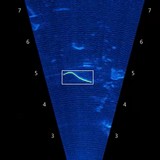CNN ARIS
 |
Automatic analysis of acoustic camera data with Convolutional Neural Networks (CNN) |
|
Research
Context and Issues
Catchment managers often use optical techniques to survey diadromous fish species and estimate their abundance; however, these methods modify fish behaviour by restricting fish passage or the use of artificial lighting. As a consequence, high frequency multi-beam sonar is increasingly used to describe these populations. Also called acoustic cameras, they record fish images which enable direct observation of their morphological and behavioural characteristics, even in turbid water. Recent development of data analysis tools, such as the Convolutional Neural Network (CNN), can highly improve the acoustic camera protocols.Objectives
This study, funded by the French Agency for Biodiversity (AFB), aims to develop CNN and deep-learning methods to identify and characterise fish species in acoustic camera files. The scientific objectives are to build a tool that automatically detects fish on acoustic recordings and identifies species according to morphological (length, shape, etc.) and behavioural (direction, undulation, swimming speed, etc.) characteristics.Methodology
This automation is developed using innovative approaches of image analysis with Convolutional Neural Networks (CNN). These tools are developed from the UMR ESE dataset as part of preliminary studies funded by the AFB. UMR ESE operators have labelled a large number of images, which promotes the learning abilities of the designed tool. Although the acoustic camera dataset is complex and uncommon, the small number of classes of objects to identify (fish or not, small number of species) justifies the objectives of this study. The CNN will use camera images and additional data as movement descriptors or expert data related to species identification.Expected Results
This study will develop new tools for automatic analysis of acoustic videos, designed for acoustic camera users, in both scientific and catchment manager communities. The developed tools are designed to automatically read the files, to extract sequences in which fish are detected, and to classify them according to their morphology and passage characteristics and, ideally, according to their species.People involved
 |
FERNANDEZ GARCIA Guglielmo, Scientist Email : guglielmo.fernandez-garcia@inrae.fr |
 |
MARTIGNAC François, Scientist Phone : +33 2 23 48 56 25 Email : francois.martignac@inrae.fr |
 |
NEVOUX Marie, Scientist Phone : +33 2 23 48 50 15 Email : marie.nevoux@inrae.fr |
